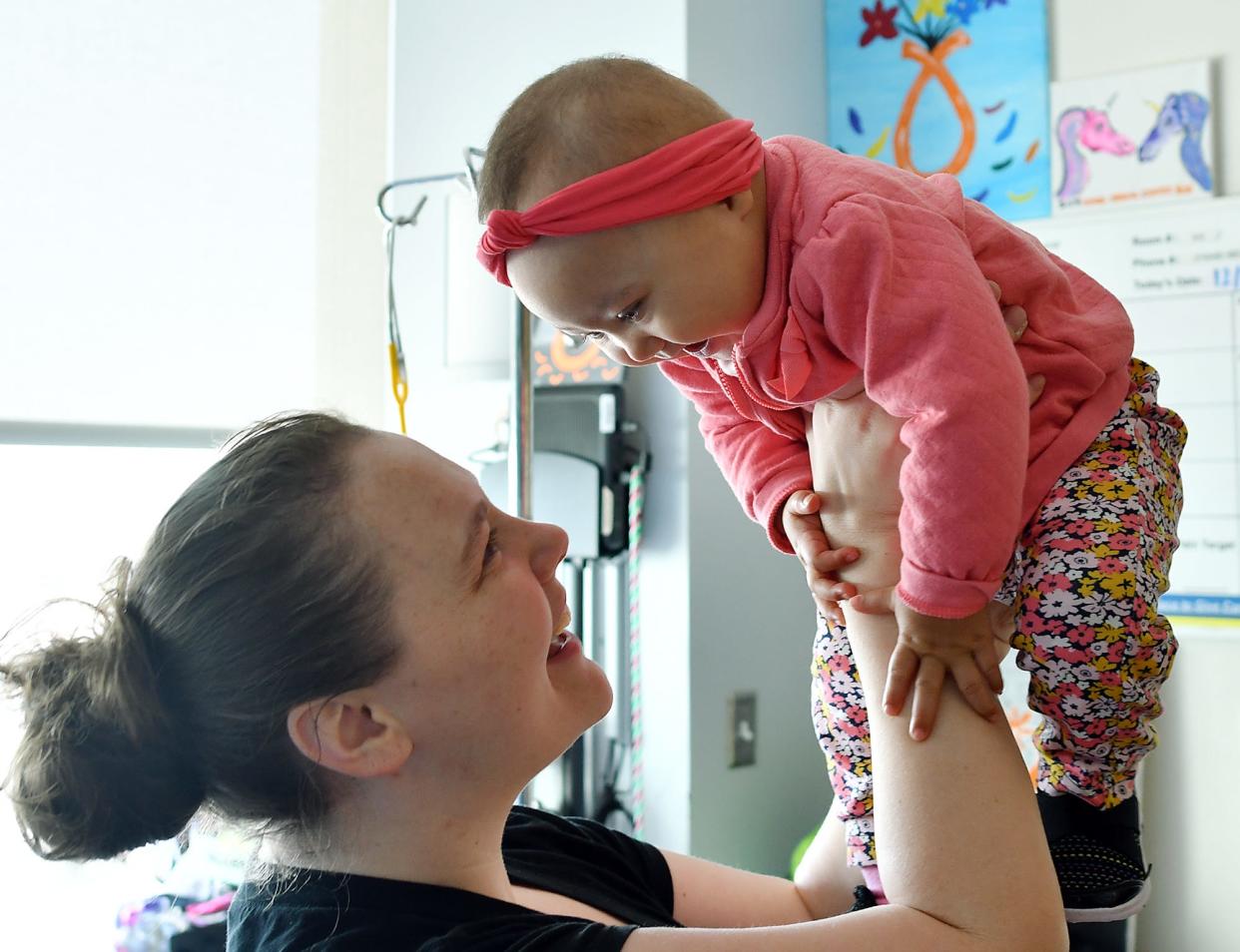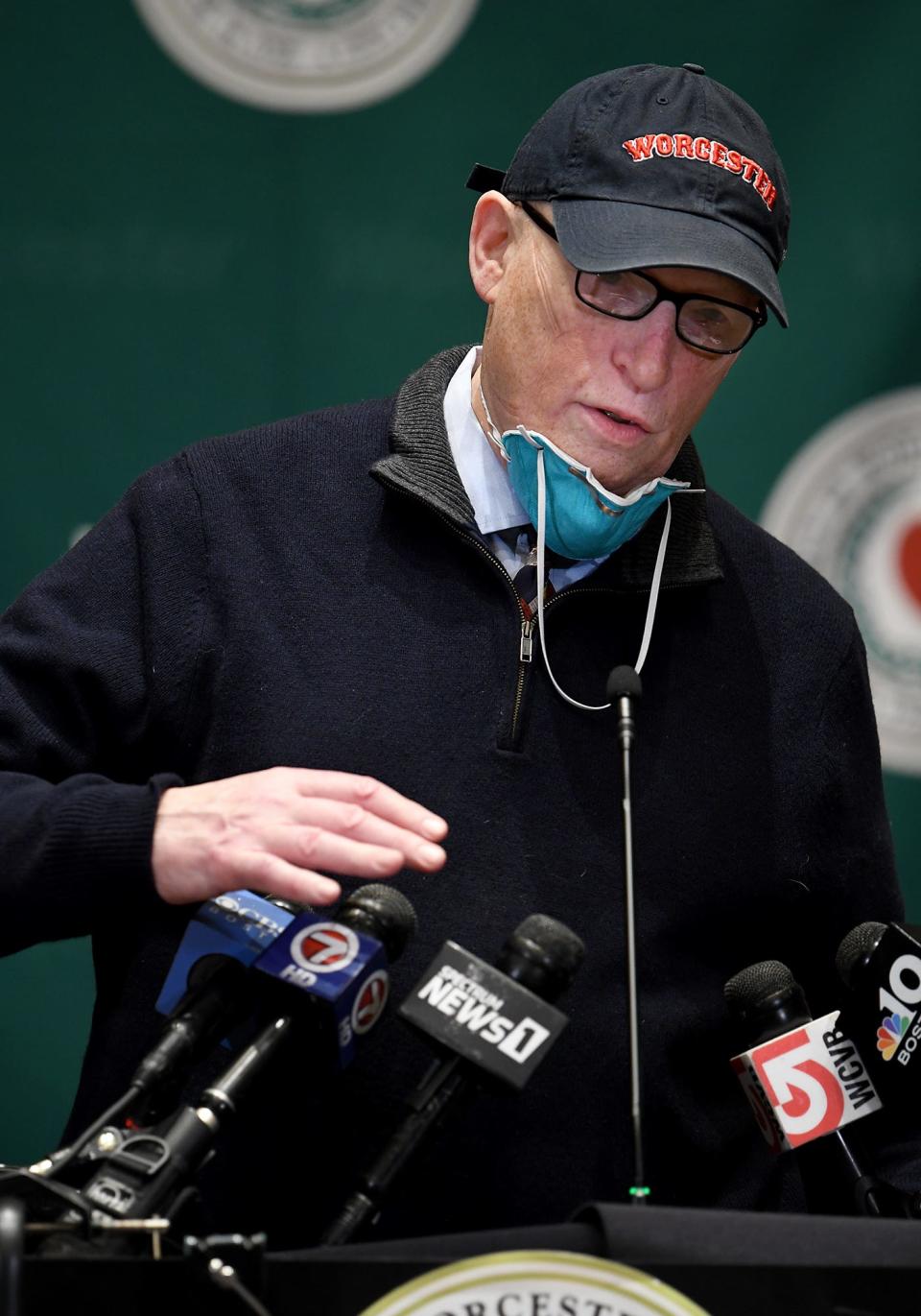Children's health care in Mass. still recovering from pandemic

- Oops!Something went wrong.Please try again later.
Pediatric health care resources have been declining for years — between 2008 and 2018, there was a 19.1% decrease in pediatric inpatient units, and the number of pediatric inpatient beds fell by 11.8%, according to an American Academy of Pediatrics report.
This issue worsened throughout the COVID-19 pandemic, resulting in children living on gurneys in hospital hallways, waiting up to eight hours to see a doctor and going months without the mental health resources they needed. Health care professionals are still reckoning with the consequences of lacking pediatric care.
In Worcester, UMass Memorial Children’s Medical Center is the only hospital-level provider between Boston and Springfield. But it’s located in a region of the state with the highest population growth, which means there are a lot of children under 18, Worcester Medical Director Dr. Michael Hirsh said in an interview.
And resources have been shrinking. MetroWest Medical Center announced in 2020 that Framingham Union Hospital’s inpatient pediatric unit was closing, and in early 2022 Tufts Medical Center announced its inpatient pediatric beds were closing as well, moving care to Boston Children’s Hospital.
“We still, every day, have many kids that are waiting in the pediatric emergency rooms for inpatient facilities, and there's just not enough,” Hirsh said. “We knew there was not enough for many years.”
Pediatric health care covers routine well-being visits, like physicals, as well as urgent care, which includes a range of issues from a fever to mental health crises. Anyone admitted into a hospital for an overnight stay would require an inpatient bed.

Hirsh said mental health and rehabilitation services in Central and Western Massachusetts are “hurting for resources” compared to the eastern part of the state. That came to a head during the first wave of the pandemic.
Theodore Macnow, medical director for the pediatric emergency room at UMass Memorial, said the pandemic came in three waves for pediatrics: the initial virus, a mental health pandemic and then respiratory syncytial virus.
At the beginning of the pandemic, shifts were lighter in the ER, he said, because children at large weren’t as susceptible to the virus as adults. So the ER upped the age of patients it saw from 18 to 35.
“Our volumes in the pediatric [emergency department] at its lowest point during COVID, we were seeing only a third of the children that we normally see,” Macnow said. “A lot of ERs suffered. They weren't bringing in money because the kids weren't coming. So some ER [doctors] lost their job or were mandated shorter jobs or lost money.”
While health care professionals began leaving the workforce during this time due to burnout and other concerns, the decreased volume of children was short-lived, Macnow said. Between late 2020 and early 2022 the number of kids with severe anxiety and suicidal ideation increased.
“I think this was, frankly, the hardest and saddest wave of the pandemic that we saw on kids,” Macnow said.
Waiting for days in ER
The mental health section of the emergency department was filling up, but it wasn’t safe for those children to go home, Macnow said. So, they lived in the ED, waiting days, weeks and months for the care they needed. Their days were marked with hospital food and the chaotic ER environment.
They were kept safe from harming themselves, but there often wasn’t therapy available, and kids couldn’t get the medication changes they needed, he said.
“I can't tell you how sad and painful that is for, especially the kids but the staff as well, that you have literally kids living in hallways or living on a gurney,” Macnow said.
Additionally, children who were under Massachusetts Department of Children and Families custody would live in the hospital if there wasn’t a safe home for them. While some children had developmental and mental health needs, there were kids who didn’t meet the psychiatric criteria for admission who lived in the hospital because DCF didn’t have a safe place for them, Macnow said.
“The influx of these patients that are stuck with mental health needs or that don't have a safe placement and are in DCF custody very much overwhelmed our nurse staffing and physical space to then be able to see regular medical patients,” he said. “It's a really sad epidemic across the United States where we are failing our children with mental health.”
Adrianna E. Crossing, an assistant professor in the Northeastern University Bouvé College of Health Sciences, said isolation, increased reliance on tech — including the continued negative impacts of social media — and disrupted routines all contributed to mental health crises among youth.
“Middle and high school students, their sense of self … [is] starting to become increasingly related to and tied to their peers rather than their parents,” Crossing said. “Getting familiar with your new identity as a young adult, as an adolescent, that's kind of yanked out from under you, which I know was really stressful and challenging for several of my teenage patients that I worked with during the pandemic.”
During the pandemic 16.7% of children 5 to 17 years old in the United States were likely to have symptoms of depression or anxiety, and prior to the pandemic that rate was 14.4%, according to results from a National Health Interview Survey.
The pandemic exacerbated the already present racial divide of mental health access. Often, suburban areas have more private practices, child psychology and psychiatric care available, Crossing said. In cities, a lot of practitioners are hospitals, community mental health agencies or nonprofit organizations, for example, and they have smaller capacities for patients.
'Tripledemic' surge most dangerous
Massachusetts researchers in psychiatry and pediatrics found that the pandemic dramatically increased depression and anxiety problems among urban, ethnic and racial minority school-age children — rising from 5% to 18%.
“There’s all these little places, whether it's an issue of race or an issue of culture, issue of socioeconomic status, issue of disability, where the pandemic just compounded all of these issues, which can exacerbate underlying challenges in anxiety or depression or behavior problems,” Crossing said. “It was sort of a perfect storm.”
The third wave Macnow identified was of a surge in RSV cases, leading to what doctors called the “tripledemic," which was a rise in flu, COVID and RSV cases.
“If I were to say the mental health wave was the saddest part of the pandemic,” he said, “this RSV surge was the most dangerous part of the pandemic for children.”
RSV is an extremely common virus. But, unlike COVID-19, it is very contagious via contact and isn’t as dangerous for adults.
The Children’s Hospital Association and the American Academy of Pediatrics called on President Joe Biden last year to declare an emergency in response to the surge in RSV hospitalizations, which overwhelmed pediatric hospital beds around the country.
In 2022 the weekly hospitalization rate for children with RSV was the highest since 2018 — and estimates calculated that one in 70 infants six months and younger was hospitalized between October and December, The New York Times reported.
“There were fewer pediatric inpatient beds as well as pediatric ICU beds, and then all of a sudden this surge of kids who needed to be admitted,” Macnow said. “The shortage of pediatric ICU beds was the most dangerous and most obvious concern with this RSV pandemic.”
As RSV surged in tandem with COVID-19 and the flu, CNBC reported that over three-fourths of the nation’s pediatric beds were full, and 17 states reported that more than 80% of their beds were occupied.
A lot of children who developed bronchiolitis, a viral infection of the lungs, as a result of RSV needed ICU beds. But they were sent to community emergency departments, which was dangerous, Macnow said, because they aren’t specifically trained in pediatric nursing.
Hospital waiting times were backed up, and children and their families waited up to eight hours for treatment.
“We saw highest volumes we’ve ever seen of mostly RSV, but the other stuff didn’t stop coming either,” he said. “We didn't have enough resources to be able to take care of them … there weren’t that many to begin with, but we sort of always met the need and could smooth it out.”
The World Health Organization declared May 5 that the COVID-19 virus no longer warrants a global public health emergency status. Throughout the past three years, the WHO has reported nearly 7 million deaths and more than 765 million cases of the virus.
Medical professionals have continued to work tirelessly during the pandemic, and there have already been adaptations in health care — like increased telehealth options and innovative methods of vaccinating against viruses.
Return to normal 'delusional'
But Gregory Hagan, a general pediatrician at the Cambridge Health Alliance, said the mindset that society can return to normal is “delusional.”
“We’re not going back to normal,” Hagan said. “We’re going to have to think about new and creative ways to meet the needs of kids and families.”
As the COVID-19 public health emergency comes to an end, there will undoubtedly be issues with insurance redeterminations and continued access to pediatric health care across the country.
But doctors and health care professionals say there is a silver lining to the work they’ve done the past three years, and it’s time to address this gap in care.
“Kids are incredibly resilient,” Hagan said. “That’s a real positive opportunity, and I hope we seize that opportunity.”
This article originally appeared on Telegram & Gazette: Children's health care still recovering from pandemic in Massachusetts

